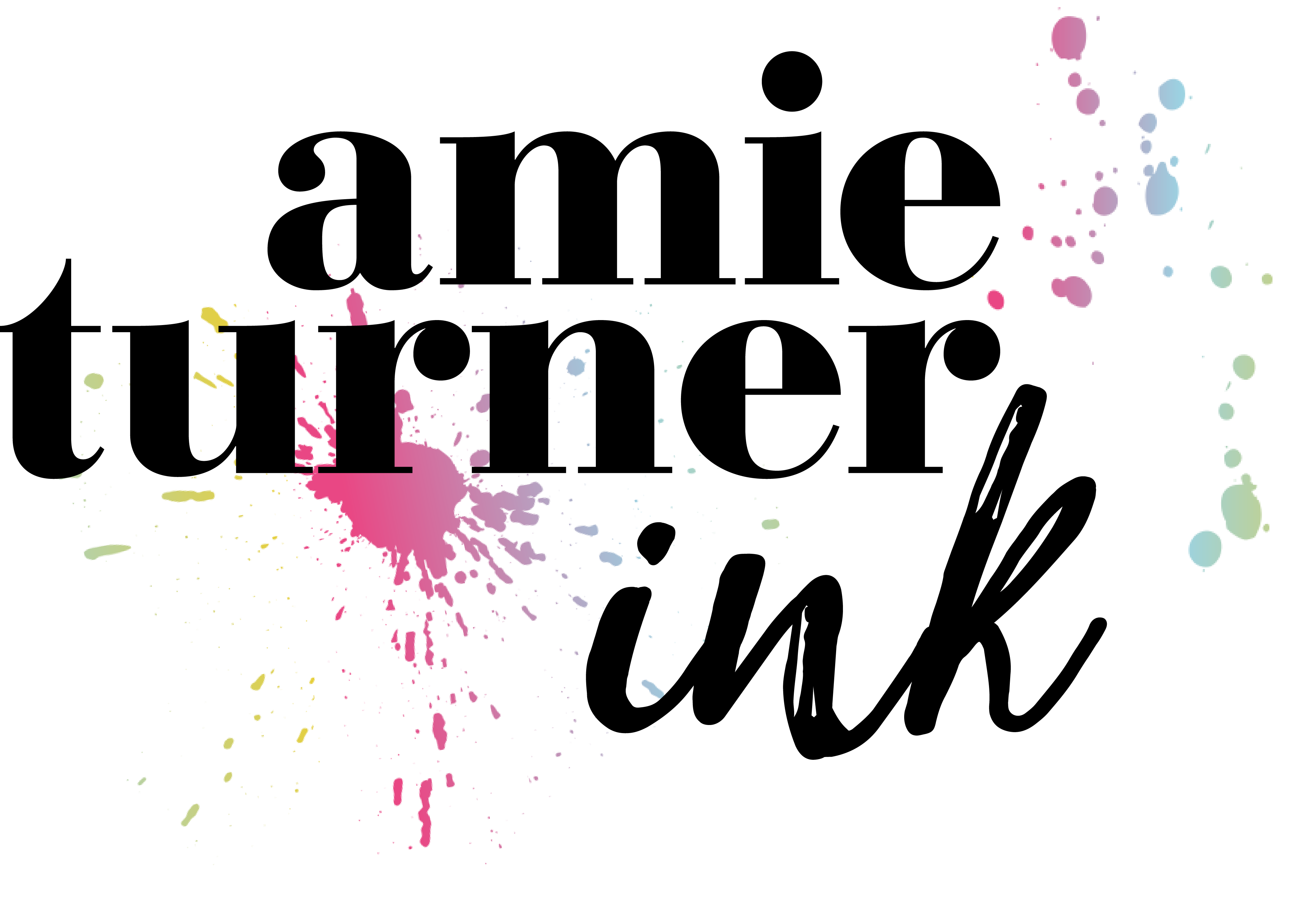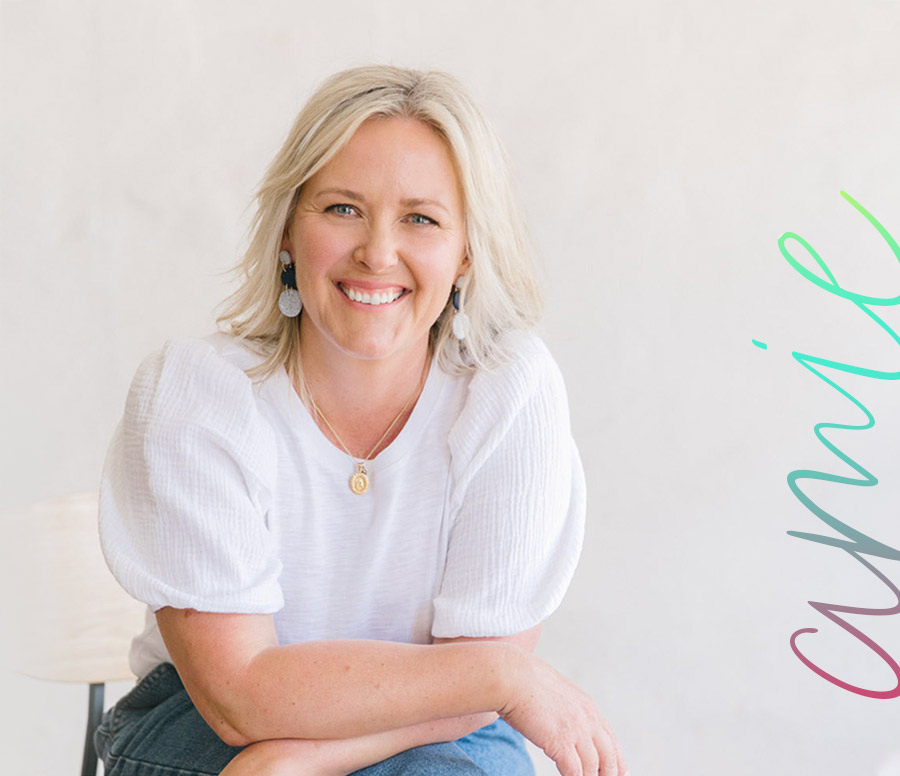How to Write The Perfect About Page (+ a handy template)

Picture this: you’ve just stumbled upon a gorgeous website. You love the design and the way it feels. You want to find out more about the business and the people behind it.
Where do you go next?
Straight to the About page, of course!
If a homepage is the storefront for your business, then the About page is the water cooler – you know, where all the very best conversations happen. As one of THE most visited pages on any website, your About page is kind of a big deal. It introduces you to potential clients, tells them why they should care about you, and shows them how you can help them – and if you do all of those things right, you’ll be guaranteed to make a great first impression.
On the flip side, without these essential elements, there’s a good chance that your ideal client will end up confused, overwhelmed or bored, and leave your site, never to return again.
It takes time and careful thought to develop a compelling, interesting and highly effective About page – and time (or lack of it) is the main reason most of us put off the writing phase – that, and procrastination…
But since you’re already here, you won’t have that problem! And just to make sure you follow through, I’ve filled this entry with tips so good that you’ll be glad you actually actioned them (instead of putting them on tomorrow’s to-do list for the fourth day in a row)
Here’s what we’ll cover:
+ The big 5, why they’re so important and how to use them
+ Getting to know your readers
+ Getting your reader’s attention
+ Fixing your reader’s problem
+ Closing the deal
I’ll also show you some fabulous examples of About pages doing errythang right.
Aaaand, as an extra bonus, there’s a free template at the end of this post designed to help you craft up an utterly un-put-down-able story about yourself.
You’re welcome.
The Big 5: Five Things Your About Page Can’t Do Without
When your About page is a black canvas, there are endless possibilites, which only makes it harder to work out where to start.
Consider this the cue you’ve been looking for: ALL About Pages must have these five non-negotiable elements: who, what, when, where, and why (with a sprinkling of “how” for good measure).
Jot down some brief notes to answer these questions:
// Who are you? What do you stand for? Give your readers a feel for your life and your personality, and let them imagine what it would be like to work with you.
// What do you do? This part will have maximum impact if you can sum it up in one tidy sentence that tells your reader exactly how you can help them with the problem they’re trying to solve.
// When did you start doing what you’re doing? Show your credibility by including information on how much experience you have and how you developed your skills.
// Where is your business located? This is extra important if your customers need to visit your physical office or store at any stage.
// Why are you doing what you’re doing? What inspires and motivates you?
// How are you doing what you do?
Basics? Check!
This next part will turn your About page from a vanilla snooze fest to an irresistible flavour explosion that leaves your readers salivating.
Get to know your readers
If you don’t know someone, how could you know what they want (and what they’ll be willing to spend money on)?
Note: you don’t need to go out for coffee with them or invite them around for Christmas lunch, but you do need to spend some time getting inside their minds and working out how they think.
Defining your target audience is one of the most important things on your pre-writing to-do list, so don’t skimp on this stage!
Even if you’re relatively new to the business arena and you’re not quite sure who your ideal audience is, the right questions will make all the difference – questions like:
+ What do my readers want and need from me?
+ Why are they coming to my site in the first place?
+ What are their hopes, fears and desires?
Your goal is to make your ideal clients feel understood, and when you get it right, you’ll find that they’re far more willing to listen to you.
How to get your reader’s attention
Plan your story carefully
We all have a story, but it’s up to you which parts you tell. Skip your early childhood and that one humiliating story from high school, and get to highlighting your progress from where you were to where you are now. You want your ideal reader to be able to see themselves walking in your footsteps and understand that the same transformation is possible for them.
Remember to keep it concise and relevant for your audience.
Tell people your stats
This creates and establishes credibility right from the outset. Other potential blogging partners, advertisers, or clients seeking reassurance that you’re an expert in your field will be able to see how many followers you have, how many blogs you’ve been published on, and how many times you’ve appeared in a super fancy publication.
Use your authentic voice
You want to establish your credibility and position yourself as an expert, but without adopting a super-dry tone that scares readers away. Even if you’re dealing with serious issues on your website, you need to be relatable to your ideal clients so be yourself and aim for a balance of professional and conversational.
Include testimonials
Testimonials are the gold of the online business world. If you haven’t been in the game long enough to collect a few kind words, consider offering to do some work for someone for free in exchange for one. With any luck, you’ll only have to do it once!
Tell them your WHY
Remember those notes you made earlier on why you do what you do? This is where your one-sentence answer will come in handy: it’s time to explain why your business exists. This will guide decisions about your priorities, actions and responsibilities to your clients, and to remind your clients what you’re all about.
For example, someone producing an ebook with recipes for fussy toddlers might write a mission statement that goes something like this: ‘to bring peace of mind to busy parents by providing simple, nutritious, kid-tested recipes.’
BONUS: Don’t lie or exaggerate.
Trying to grab your readers’ attention with falsified stats is like adding a fake reference to your resume: you probably won’t get away with it, and even if you do, people will eventually figure out that you’re not the expert you made yourself out to be. Don’t risk the credibility you’ve worked so hard to establish!
How to fix your reader’s problem
Problems are part of life, and they’re also the beginning of many great business opportunities. All you have to do is show your reader that you get it: you know there’s something standing in the way of what they want, and you’re ready to help them move it.
Let these steps guide your approach, and your potential clients will be on your side in no time.
Start with understanding
In case you missed the memo, your About page isn’t really about you (talk about a misleading title) – it’s about your ideal customer. People will happily sit and read your story for a while, but they won’t stick around to hear the ending unless there’s something in it for them, and you know what that means: your story needs to resonate with them and demonstrate your ability to solve their problems.
From here, you can expand on this by showing them that you understand the questions or barriers they might have. Illustrating an understanding of the problems stopping your ideal client from buying (in a totally down to earth, and relatable way) helps to build trust.
To really drive home the message that you understand your ideal client and their challenges, you could even offer an anecdote about your own experience that aligns with theirs.
Focus on benefits, not features
The difference between features and benefits can be difficult to get your head around, but once you do, you’ll be communicating on a whole new level.
In a nutshell, features describe what your product or service does, whereas benefits describe what your ideal customer will get out of using it.
Here’s an example:
- Feature: Speedy service
- Benefit: Time savings
Focussing on benefits ensures that your client will see the product framed from their perspective – subtle, yet powerful.
How to close the deal
So you’ve taken all of the most pertinent information about your business and what you do, framed it from your reader’s perspective, and made sure all the benefits were super clear…
Now what?
It’s time to make them feel something.
Logical language, facts, and pretty pictures are great, but it’s emotion that leads to sales.
So, it’s time to ask yourself…
How do my ideal clients want to feel?
No matter what you do, your business is built around a central benefit to your clients – all you have to do is work out what feeling they’re chasing and emphasise that in your copy.
Put yourself in the shoes of a professional bookkeeper – the benefits they offer to clients include things like:
- More time to work on their business rather than in their business
- Accuracy and care
- The experience to suggest areas for improvement in the business
Those benefits translate into feelings, like:
- More time – feeling of freedom
- Accuracy – feeling of security
- Experience – feeling empowered
The benefits of your service stem from the features, but the features won’t be enough to really grab your ideal client, so think about how those features actually improve their lives.
Think about it this way….
A photographer doesn’t just take your wedding photos; they capture precious memories to last a lifetime.
A wellness coach doesn’t just give you information on counting calories; they provide one-on-one support to help you become a healthier, more vibrant version of yourself.
A graphic designer doesn’t just provide colour and graphics; they take your website and marketing materials to a place you could never get to on your own, saving you time and making you look amazing.
What feeling do you want to provide for your ideal clients?
Call to Action
Congratulations! You’ve made it to the business end of your About page but it doesn’t end here. This is where you invite the reader to take an action. Your CTA is all about getting results, and it’s surprisingly simple: all you have to do is ask for what you want!
You might ask your reader to share your post via social media, or click over to another blog post, sign up, or read about your latest product or offering – whatever it is, this step should lead them one step closer to a sale.
A final word about Abouts
This is your chance to make a super first impression, and you don’t want to blow it! Employ a copywriter if you have to, or at the very least, get a competent writer to run their eye over it for you.
The copy on your site is just as (if not more) important than the look and feel. It should be clear, clever and easy to read because according to the stats, you have less than a minute to grab your readers’ attention.
Once you do that (and only then), you’ll have the chance to convince them that you understand exactly what they want and need, and can fill that service-sized hole in their hearts.
Before you go, I have something for you…
Take your answers from the notes you’ve been scribbling while reading this post (you haaaave been taking notes, yes?), download the template and use them to shape your own version of About page perfection.
Just so you know, this isn’t a fill in the blanks and print kind of template. You’ll need to tweak it and make it your own!
You can download your About Page Template here.
I’d love to know how you go with the process of crafting an About page that fits – let me know in the comments, and feel free to leave a link so I can check it out!
Still need help? Get in touch! I can write a beautiful About page for you, or weave the one you have into a winner.
Share the love!
WONDERING WHAT TO INCLUDE ON YOUR
SALES PAGE?
Download my sales page outline and follow the 10 simple steps to writing a standout sales page that sells.
By entering your info, you agree to receive emails and promos from me (Yay!). Per my Privacy Notice, your details are never shared (ew) and you can unsubscribe at any time (honestly, no hard feelings).




